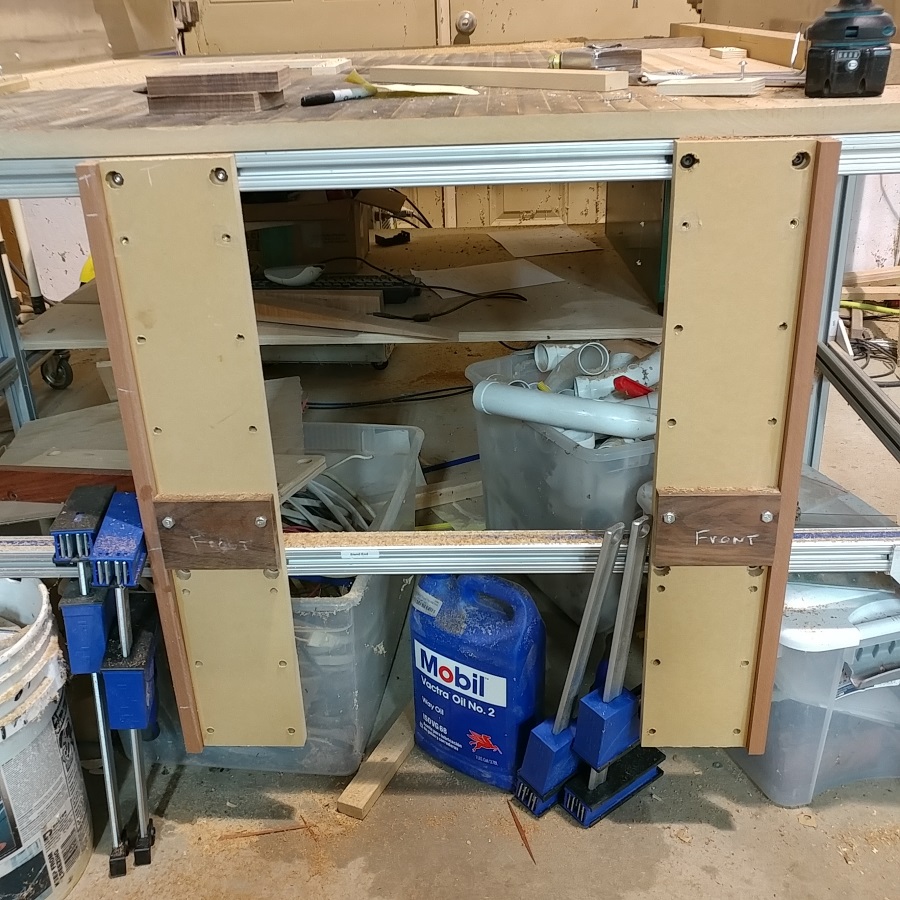12-12-2018, 02:27 AM
I thought I would share this latest jig that I created for my CNC. I am working on a piece for a client where I need to do a long finger joint (interior of a cabinet), and I really don't think this would have worked trying to do this on my tablesaw or normal router because of the length, and since I have a CNC, I thought I'd create a jig. It took a few hours to design & cut, using my CNC to get the accuracy. I am using threaded inserts to hold a horizontal piece (labeled "front" in the pic). I also offset the holes on this to give me ability to handle a wide length of woods by flipping this support over.
When I first installed it, the height difference from one end to the other on the 26" piece was 1/32 off, which I could have probably ignored, but I put a shim underneath. I think that's decent accuracy.
My first test pieces I didn't leave any wiggle room, cutting right to the line and it just wouldn't fit. I adjusted the next pass and took off an extra 0.005 on each of the fingers and it's snug, but can be pounded together fairly easily. It's a firm fit. I'm pretty pleased with how this works.
Here's the jig:


Here's the first cut using a scrap piece of pine:


here's the dry fit on that pine:


and the final customer piece (which was lacewood). I adjusted the depth to leave it just a tad proud so I can sand it down. Got a bit of tearout. Could use a backer board to reduce that in the future, but it will sand out fine.


When I first installed it, the height difference from one end to the other on the 26" piece was 1/32 off, which I could have probably ignored, but I put a shim underneath. I think that's decent accuracy.
My first test pieces I didn't leave any wiggle room, cutting right to the line and it just wouldn't fit. I adjusted the next pass and took off an extra 0.005 on each of the fingers and it's snug, but can be pounded together fairly easily. It's a firm fit. I'm pretty pleased with how this works.
Here's the jig:

Here's the first cut using a scrap piece of pine:

here's the dry fit on that pine:

and the final customer piece (which was lacewood). I adjusted the depth to leave it just a tad proud so I can sand it down. Got a bit of tearout. Could use a backer board to reduce that in the future, but it will sand out fine.

Thurman
Portland, OR
Portland, OR



